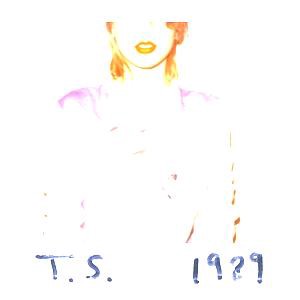Everything Except Rap and Country

There is something that reviewers are not quite saying about Taylor Swift’s new album, 1989. It’s on the tips of their tongues. Jon Caramanica comes closest:
Modern pop stars — white pop stars, that is — mainly get there by emulating black music. Think of Miley Cyrus, Justin Timberlake, Justin Bieber. In the current ecosystem, Katy Perry is probably the pop star least reliant on hip-hop and R&B; to make her sound, but her biggest recent hit featured the rapper Juicy J; she’s not immune.
Ms. Swift, though, is having none of that; what she doesn’t do on this album is as important as what she does. There is no production by Diplo or Mike Will Made-It here, no guest verse by Drake or Pitbull. Her idea of pop music harks back to a period — the mid-1980s — when pop was less overtly hybrid. That choice allows her to stake out popular turf without having to keep up with the latest microtrends, and without being accused of cultural appropriation.
That Ms. Swift wants to be left out of those debates was clear in the video for this album’s first single, the spry “Shake It Off,” in which she surrounds herself with all sorts of hip-hop dancers and bumbles all the moves. Later in the video, she surrounds herself with regular folks, and they all shimmy un-self-consciously, not trying to be cool.
See what Ms. Swift did there? The singer most likely to sell the most copies of any album this year has written herself a narrative in which she’s still the outsider. She is the butterfingers in a group of experts, the approachable one in a sea of high post, the small-town girl learning to navigate the big city.
The line on the new album’s music is: Less country, more pop. But not just any pop! Maybe…white pop.
This would complete every thought:
[Katie Perry’s] biggest recent hit featured the rapper Juicy J; she’s not immune.
Immune to… non-white influence?
[Swift’s] idea of pop music harks back to a period — the mid-1980s — when pop was less overtly hybrid.
And, in the same quarters, more overtly white!
That choice allows her to stake out popular turf without having to keep up with the latest microtrends, and without being accused of cultural appropriation.
Avoiding non-white “microtrends” isolates Taylor Swift from charges of appropriation, because they have no specific and recent non-white influence to refer to.
[In “Shake It Off”] she surrounds herself with all sorts of hip-hop dancers and bumbles all the moves. Later in the video, she surrounds herself with regular folks, and they all shimmy un-self-consciously, not trying to be cool.
Who, exactly, would interpret those signals as not “cool” but instead “regular?” Not everybody; specifically, somebody.
The singer most likely to sell the most copies of any album this year has written herself a narrative in which she’s still the outsider.
You know who else suddenly feels culturally outside of the mainstream? (Besides, as always, anyone over the age of 30?) People who are skeptical of America’s demographic progress! Or who, at least, don’t feel comfortable thinking or talking about it. If Jon Caramanica is right, the promotional theory and marketing conversations around 1989, and an overarching influence on its music, can be summed up as: Intentional, Performed Whiteness. It’s an artistic manifestation of the old adolescent conversation:
“What kind of music do you like?”
“Everything. Except rap and country.”
